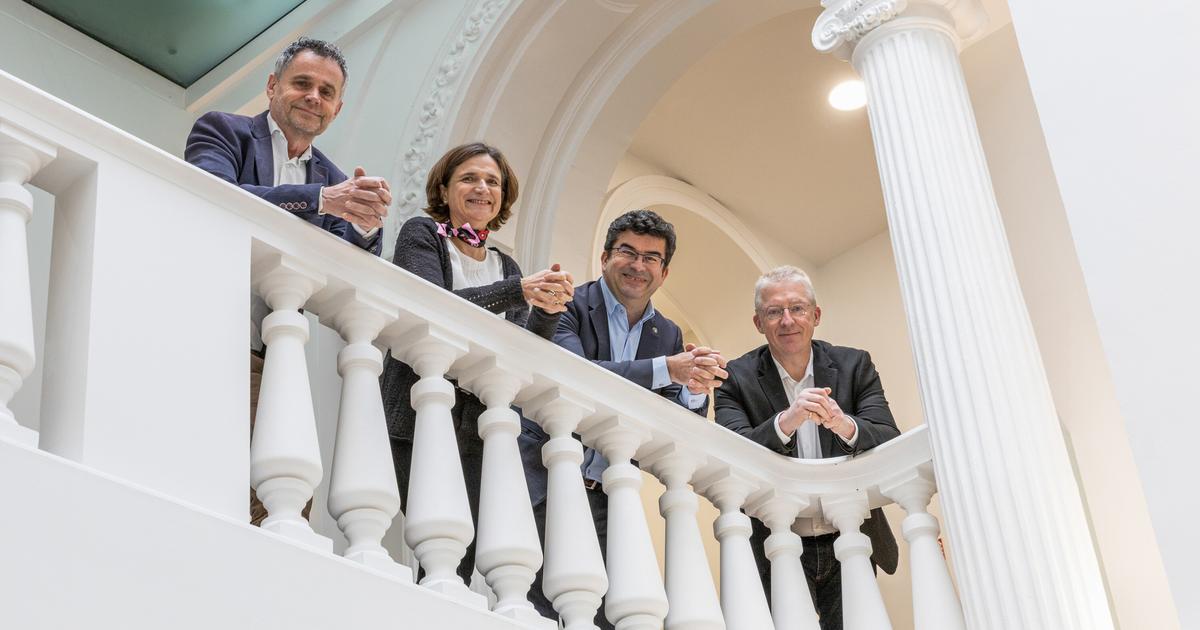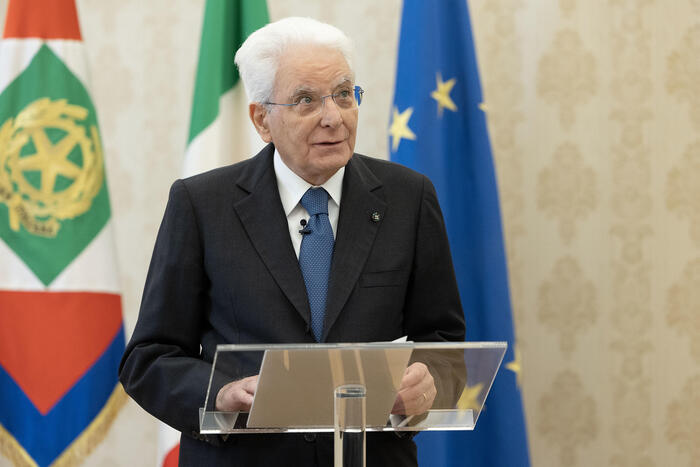James Brandon Lewis performing in Rotterdam in 2017.Peter van Breukelen
"The world doesn't need another John Coltrane," says James Brandon Lewis (Buffalo, New York, 38 years old), voted the most promising tenor sax of 2020 in
DownBeat
magazine
. However, not only stylistically it is possible to compare him with the one who bequeathed us
Giant Steps
- Lewis's music effortlessly runs from melodic richness to the most caustic outbursts, challenging but focused - also because of the innate curiosity that leads him to explore disciplines far from the music. In his album
Mollecular
(2020), for example, he pushed his quartet to the jazzy rendering of the helical structure of DNA ... with feverish, transcendent, intrepid results.
"Leonard Bernstein used to say that the best way to learn something is to put it in another context," Lewis responds from Rome, at the start of his first tour in a long time.
“It is a feeling that I try to live by.
Viewing music through the lens of molecular biology gives you a fresh perspective.
Gospel was part of my environment as a child, and it is music that has a strong cultural identity, so it permeates my sound.
It is interesting that the perception of sound is influenced by your general environment, which is not only related to cultural identity.
This enriches your sound palette ”.
More information
Who knows James Brandon Lewis?
Gato Barbieri, the great ambassador of Argentine jazz, dies
On tour in Italy and Spain as an instrumentalist in tribute to the popular Argentine saxophonist Leandro
Gato
Barbieri (1932-2016) conceived by the young Italian pianist Giovanni Guidi, in
Ojos de Gato
Lewis he shares the stage with trombonist Gianluca Petrella, bassist Brandon López and drummers Francisco Mela and Chad Taylor, the New Yorker's regular accomplice. "A few years ago, Laura Barbieri, his widow, contacted me to participate in the album that Giovanni was preparing, and I agreed," explains Lewis. "I was returning the favor to Giovanni and his late father, Mario Guidi, and I was honored to be able to play with musicians connected to Gato."
A student at Howard University in Washington DC, whose jazz course was founded by the trumpeter Donald Byrd, and at the California art school Cal Arts, where he studied with Charlie Haden, Wadada Leo Smith or Alphonso Johnson, Lewis plays the composer who does not differentiate between classrooms or clubs. Sonny Rollins said of him that he was "a promising young man, with great potential, who has listened to his elders." If anything defines Lewis, it is a respect, always critical, for tradition. Is the past an impulse to catapult into the future? "I don't see it that way," he reasons. “I was brought up to respect my elders, and their knowledge precedes mine, so I hope to gain knowledge and perspective, not to catapult me. Lineage is important. Having mentors adds texture to your own persona. To learn, you must be humble. "
The New York Times
defined his style as "crude in tone but measured, it does not sound a prisoner of the current academic values of jazz, it goes on its own." This has been the case since, in 2014, he debuted at Sony with
Divine Travels
. After a second album at the multinational, he recorded a series of albums for small labels that culminated in the very powerful
An UnRuly Manifesto
(2019), an affirmation of free jazz dedicated to surrealism, to Ornette Coleman and Charlie Haden. "My dedication to music is summed up in playing as if it were always the last time," he says. “Every day I go out in a constant search for the truest version of who I am, and every day I get a little closer to my authentic musical self. I hope to achieve it before I leave this world ”.
“My mother was a science teacher; I always liked them. Carver's interdisciplinary interest showed me that he could do more than just think about music and play it, "he says.
The most recent stage of this experience, the album
Jesup Wagon
(2021) is inspired by the teachings of the 19th century African-American musician, painter, writer and scientist George Washington Carver, one of whose obsessions was sustainable agriculture. "Science made me interested in his work," he explains. “My mother was a science teacher; I always liked them. Carver's interdisciplinary interest showed me that he could do more than just think about music and play it; he could relate it to other media such as poetry, visual art, and science. I learned that everything is related and that divisions only create internal conflicts. It is about understanding that everything is related to each other. Carver was once asked how he could discover so many things. He answered that by talking to the plants.
Ojos de Gato
, recorded in February 2020 in a New York studio under the leadership of Giovanni Guidi, brings Lewis back to our stages.
He's not intimidated by more affordable jazz artists like Barbieri, as shown by his defense of the successful Grover Washington Jr., who was from Buffalo like him.
Lewis cried the day he died, evidence that genius does not divide, add.
"To be a genius is to explore yourself and fully materialize your sound," he concludes.
"And mistakes must be assumed, because sometimes you have the idea that mastery is perfection, but they are not interchangeable words."
Giovanni Guidi,
Ojos de Gato
: July 23, Clamores, Madrid;
24, Jazzaldia, San Sebastián;
27 Sa Pobla Jazz Festival, Mallorca.

/cloudfront-eu-central-1.images.arcpublishing.com/prisa/GNSAQUV5ZJBGNIR5HBB25F27T4.jpg)


/cloudfront-eu-central-1.images.arcpublishing.com/prisa/3VLEJSDWHVBTXIQ3PJMH7AC22Y.jpg)

/cloudfront-eu-central-1.images.arcpublishing.com/prisa/ELBVFZH2DRHMJMYSCFHMSYYR34.jpg)





/cloudfront-eu-central-1.images.arcpublishing.com/prisa/S7ERVSCT4FUVX6R7TUVBDNTH5Y.jpg)


